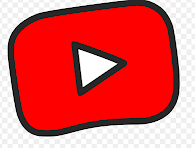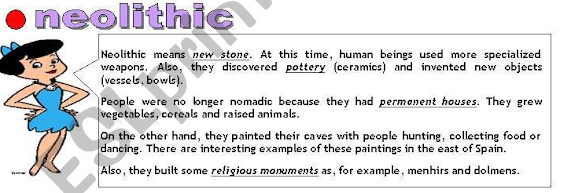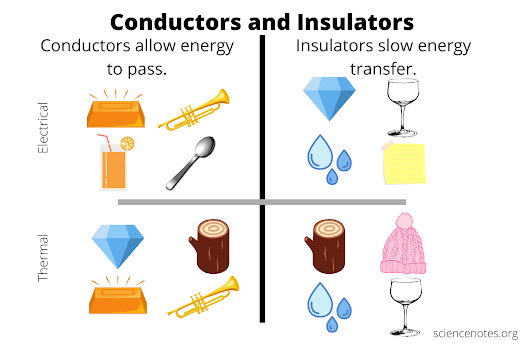Thursday, 20th of January 2022
Hello children!! We are learning about the Historical periods in unit 2, so here you have several games for revising and learning about.
Hope you like it!
Have a nice week.
xxx💓💓💓
Teacher Mar
Monday, 17th of January 2022
Hello children!! We are learning about the Historical periods in unit 2, so here you have several vídeos for revising and learning about. Besides, you will find different interactive activities to check everything.
Hope you like it!
Have a nice week.
xxx💓💓💓
Teacher Mar
VIDEOS:
PREHISTORY:
ANCIENT TIMES:
MIDDLE AGES:
MODERN AGE:
CONTEMPORARY TIMES:
INTERACTIVES WORKSHEETS FOR REVISING:
https://es.liveworksheets.com/worksheets/en/Social_Science/Prehistory/Prehistory_rh621209ch
Saturday, 20th of November 2021
Hello children!! We are learning about the systems involved in our vital functions: digestive, respiratory and circulatory. Then, here you have several activites for revising and learning about. Besides, I will leave here the information that we copied in our notebooks for study.
Hope you like it!
Have a nice weekend,
xxx💓💓💓
Teacher Mar
ACTIVITIES:
https://es.liveworksheets.com/xc185245nj (DIGESTIVE + RESPIRATORY)
https://es.liveworksheets.com/worksheets/en/Natural_Science/Respiratory_system/Respiratpry_system_dd1449838yt (RESPIRATORY)
https://es.liveworksheets.com/worksheets/en/Natural_Science/Respiratory_system/The_Respiratory_System_lt1253676mu (RESPIRATORY)
https://es.liveworksheets.com/worksheets/en/Natural_Science/Respiratory_system/Circulatory_system_bg1261144yq (CIRCULATORY)
https://es.liveworksheets.com/worksheets/en/Natural_Science/Circulatory_system/The_circulatory_system_bf667349gu (CIRCULATORY)
DIAGRAMS NOTEBOOK:
Nutrients:
Digestive system:
Circulatory system:
Respiratory system:(hay una errata - donde pone LUNGS, no es HAS; sino HAVE)
Friday, 5th of November 2021
Thursday , June 3rd
(COMO EL RESTO DE DÍAS. RECOPILAR TODA LA INFORMACION QUE NOS APARECE EN LA PARTE DE INVESTIGATE QUE HEMOS VISTO HOY)
Wednesday, June 2nd
MIDDLE AGES
(PARA 3ºA, B Y C)
(COMO EL RESTO DE DÍAS. RECOPILAR TODA LA INFORMACION QUE NOS APARECE EN LA PARTE DE INVESTIGATE QUE HEMOS VISTO HOY)
Tuesday, June 1st
(PARA 3ºA, B Y C)
(COMO EL RESTO DE DÍAS. RECOPILAR TODA LA INFORMACION QUE NOS APARECE EN LA PARTE DE INVESTIGATE QUE HEMOS VISTO HOY)
NOW YOU CAN SEE SOME VIDEOS OF INTEREST!!!
Friday, May 28th
(PARA 3ºA, B Y C)
THE PREHISTORY
Tuesday, May 25th
(PARA 3ºC)
Page 88: Here you are the answers:
Page 88
(PARA 3ºA Y 3ºB)
Hi kids! Here I post you the answers from the last worksheet about the Roman Numeral and the answers of THINK ABOUT if you want to review more the unit and be perfectly ready por the exam.
I HOPE YOU DO IT!
STUDY A LOT ✌!!!!
Jueves 6 de mayo de 2021.
Hi kids! Here we post you some videos and links that can help you to review this Social Science unit!
LINKS TO PRACTICE
EJERCICIO 1
Martes 27 de abril de 2021.
-Respuestas preguntas THINK ABOUT IT . 3ºA Y 3ºB
Miércoles 14 de abril de 2021.
Resumen página 60. 3ºA Y 3ºB
Materials have different properties. Glass is hard, plastic is flexible. One of the properties of a material is how THERMAL AND ELECTRIC ENERGY passes through it. Materials can be INSULATORS AND CONDUCTORS.
CONDUCTORS: Thermal and electric energy passes through conductor quickly. METALS ARE GOOD CONDUCTORS.
INSULATORS: Thermal and electric energy pass through insulator quickly. WOOD, WOOL AND PLASTIC ARE GOOD INDUCTORS.
Martes 13 de abril de 2021.
HI KIDS , IF YOU WANT TO LEARN MORE AND MORE , HERE I POST YOU SOME VIDEOS ABOUT ENERGY , TYPES AND A SONG ABOUT THE TRHEE R´S. I HOPE YOU LIKE IT!
THE THREE R´S SONG
Lunes 12 de abril de 2021.
CHAGES OF STATE
Jueves 8 de abril de 2021.
UNIT 5: CAN YOU HELP SAVE THE PLANET?
Resumen página 56. (3ºA Y 3ºB)
Jueves 8 de abril de 2021.
UNIT 5: CAN YOU HELP SAVE THE PLANET?
Resumen página 56. (3ºA Y 3ºB)
THE MATTER AND THE STATES
A pen is made of plastic and a book is made of paper. Both are made of matter. Everything around us is made of matter.
Matter has 3 states:
-SOLID: definite shape and definite volume.
-LIQUID: no definite shape and definite volume.
-GAS: no definite shape and volume.
NOW YOU CAN SEE THIS INTERESTING VIDEOS THAT WILL HELP YOU!
Wednesday, March 10th
Social Science
Hello!Here you can click on different links to practise the autonomous communities and provinces of Spain in an interactive way!
Friday, March 5th
Here is a video made by Bella, one of our language assistants. Thanks to this dance the students will be able to remember the photosynthesis process more easily.
Thursday, March 4th
Photosynthesis
Wednesday, March 3rd
Parts of a flower and pollination
Monday, March 1stWednesday, February 24th
NATURAL SCIENCE
Unit 4: Plants
Parts of a plant
Thursday, February 4th
Hi kids!Today we post you some interesting videos you can watch at home and study the unit!(Vídeos para todos los grupos).
👇¿Quieres practicar jugando?👇Enlaces para jugar y practicar Geografía de Europa.
Wednesday, February 3rd
Social Sciene Unit 3 (vídeo introducción para todos los grupos)
Monday 1st february
3ºa y b( Respuestas ficha 2)
INVERTEBRATES
THE MATTER AND THE STATES
A pen is made of plastic and a book is made of paper. Both are made of matter. Everything around us is made of matter.
Matter has 3 states:
-SOLID: definite shape and definite volume.
-LIQUID: no definite shape and definite volume.
-GAS: no definite shape and volume.
Wednesday, March 10th
Social Science
Hello!Here you can click on different links to practise the autonomous communities and provinces of Spain in an interactive way!
Friday, March 5th
Here is a video made by Bella, one of our language assistants. Thanks to this dance the students will be able to remember the photosynthesis process more easily.
Thursday, March 4th
Photosynthesis
Wednesday, March 3rd
Parts of a flower and pollination
Wednesday, February 24th
NATURAL SCIENCE
Unit 4: Plants
Thursday, February 4th
Hi kids!Today we post you some interesting videos you can watch at home and study the unit!(Vídeos para todos los grupos).
Wednesday, February 3rd
Social Sciene Unit 3 (vídeo introducción para todos los grupos)
Monday 1st february
3ºa y b( Respuestas ficha 2)
INVERTEBRATES
Invertebrates are the largest group of animals. Some live in water and others on land. They all share one characteristic: they do not have a backbone.
There are two main groups:
1.ARTHROPODS: We can find four smaller groups:
-Insects: exoskeleton, six legs, two antennae, wings...
-Myriapods: exoskeleton, segmented body, two antennae, many legs...
-Arachnids: exoskeleton, eight legs, eight eyes...
-Crustaceans: hard exoskeleton, eight legs, two claws, four antennae...
2. MOLLUCS: We can find three groups:
-Gastropods: have a shell and a soft body.
-CEPHALOPODS: do not have a shell, have tentacles and soft bodies.
-Bivalves: have two shells that open and close.
RESUMEN AMPHIBIANS
5. AMPHIBIANS: They are very interesting because these animals transform as they grow. This is called metamorphosis.
-Nutrition: Most are carnivores.
-Reproduction: They are oviparous(The lay eggs).
-Respiration:Baby use gills to breathe under the water and adults use lungs to breathe. Also the use their moist skin.
-Physical characteristics: Do not have scales, they absorb oxygen though the moist skin.
Tuesday, January 26th
Activities: Arthropods 1
Monday, January 25th
Friday, January 22nd
Hola chicos , aquí os dejo los resúmenes para las páginas 34 y 37. No os olvidéis de ir estudiando todo el contenido y vocabulario que estamos viendo.
3. REPTILES: Crocodiles, snakes and turtles look different but belong to the same group...
-Nutrition: Most are carnivores but some are omnivores.
-Reproduction: They are oviparous(The lay eggs).
-Respiration:They breathe with theis lungs.
-Physical characteristics: They have scales with help them camuflage and prevent water evaporation. Most of them have arms and legs that help them to walk or run. Ohter reptiles swim. Snakes have no legs , they slither.
4. FISH: Live in water,some such as tuna live in the sea other like carp live in the river.
-Nutrition: They can be carnivores, hervibores or omnivores.
-Reproduction: Almost all fish are oviparous(The lay eggs).
-Respiration:Fish talke the oxygen they need from the water using thei gills.
-Physical characteristics: They have scales, to protect them from injury. Also scales help fish to swim using their fins.
Thursday, January 21st
Hola chicos , aquí os dejo los resúmenes para las páginas 32 y 33. No os olvidéis de ir estudiando todo el contenido y vocabulario que estamos viendo.
PÁGINA 33.
2 . BIRDS: There are many species of birds with different sizes, colours...
-Nutrition: They can be carnivores(eat meat), herbivores(eat plants) and omnivores( eat both).Adults feed theis chicks when they are young.
-Reproduction: They are oviparous(The lay eggs)
-Respiration: The use lungs to breathe.
-Physical characteristics: Wings, a tail, feathers, light hollow bones and a beak.
PÁGINA 32
Animals are divided into two groups: vertebrates (have a backbone) and invertebrates(don´t have a backbone).
VERTEBRATES are divided into:
MAMMALS, BIRDS, REPTILES, AMPHIBIANS AND FISH.
1. MAMMALS
-Nutrition: They can be carnivores(eat meat), herbivores(eat plants) and omnivores( eat both).
-Reproduction: They are viviparous.
-Respiration: The use lungs to breathe.
-Physical characteristics: Four legs, fur, hair and sometimes use flippers.,
January 19th
1. Watch the following video about amphibians.
2.Open
your books on page 36 and watch the following video.
3. Do the following activities (notebook).
Monday, January 18th
1. Watch the following video about reptiles.
2. Open your books on page 34 and watch the following video.
3. Do the next activity (notebook).
Thursday, January 14th
1. Answers:
Activity 3:
a.These animals eat other animals-Carnivores.
b.These animals eat plants-Hervivores.
c.These animals eat both plants and other animals-Omnivores.
d.These animals lay eggs-Oviparous.
e.These animals’ babies are born live-viviparous.
2. Watch the next video about birds.
3. Open your books on page 33 and watch the next video. (You are going to listen to the information that appears on page 33).
4. Do the next activity (notebook).
Wednesday, January 13th
*Today we are going to talk about vertebrates. (Vamos a ver los distintos grupos de vertebrados uno a uno. En todos ellos nos vamos a centrar en las mismas características para ver las semejanzas y diferencias entre ellos: nutrición, respiración, reproducción y características físicas).
1. Watch the next video. In this video you are going to learn the aspects we will study in each vertebrates group: nutrition, respiration and reproduction.
2. Watch the next video about mammals.
3. Open your books on page 32 and watch the next video.
(You are going to listen to the information that appears on page 32).
Tuesday, January 12th
*Hoy vamos a trabajar con el lbro de Natural Science y con el cuaderno.
1. Copy the following information in your notebook. (Vamos a copiar la información que ponemos siempre que empezamos una unidad nueva).
TUESDAY, JANUARY 12TH, 2021.
UNIT 3
WHICH VERTEBRATE HAS TWO LIVES?
1. VERTEBRATES
-MAMMALS
-BIRDS
-REPTILES
-AMPHIBIANS
-FISH
2. INVERTEBRATES
-ARTHROPODS
-MOLLUSCS
2. Look and answer the blue questions that appear on pages 30 & 31. ( Son las preguntas de color azul que están sueltas por las páginas. Contestadlas en vuestro cuaderno). We will correct it in class.
2. Listen to the song of the unit. (Page 31)
3. Watch the following documentary. (Page 31)
Monday , January 11th
Natural Science: Unit 3
(Os dejamos a continuación un par de vídeos para introducir la unidad que vamos a trabajar).
- Watch the following videos about "Vertebrates & Invertebrates":
There are two main groups:
1.ARTHROPODS: We can find four smaller groups:
-Insects: exoskeleton, six legs, two antennae, wings...
-Myriapods: exoskeleton, segmented body, two antennae, many legs...
-Arachnids: exoskeleton, eight legs, eight eyes...
-Crustaceans: hard exoskeleton, eight legs, two claws, four antennae...
2. MOLLUCS: We can find three groups:
-Gastropods: have a shell and a soft body.
-CEPHALOPODS: do not have a shell, have tentacles and soft bodies.
-Bivalves: have two shells that open and close.
RESUMEN AMPHIBIANS
5. AMPHIBIANS: They are very interesting because these animals transform as they grow. This is called metamorphosis.
-Nutrition: Most are carnivores.
-Reproduction: They are oviparous(The lay eggs).
-Respiration:Baby use gills to breathe under the water and adults use lungs to breathe. Also the use their moist skin.
-Physical characteristics: Do not have scales, they absorb oxygen though the moist skin.
Tuesday, January 26th
Friday, January 22nd
Hola chicos , aquí os dejo los resúmenes para las páginas 34 y 37. No os olvidéis de ir estudiando todo el contenido y vocabulario que estamos viendo.
3. REPTILES: Crocodiles, snakes and turtles look different but belong to the same group...
-Nutrition: Most are carnivores but some are omnivores.
-Reproduction: They are oviparous(The lay eggs).
-Respiration:They breathe with theis lungs.
-Physical characteristics: They have scales with help them camuflage and prevent water evaporation. Most of them have arms and legs that help them to walk or run. Ohter reptiles swim. Snakes have no legs , they slither.
4. FISH: Live in water,some such as tuna live in the sea other like carp live in the river.
-Nutrition: They can be carnivores, hervibores or omnivores.
-Reproduction: Almost all fish are oviparous(The lay eggs).
-Respiration:Fish talke the oxygen they need from the water using thei gills.
-Physical characteristics: They have scales, to protect them from injury. Also scales help fish to swim using their fins.
Thursday, January 21st
Hola chicos , aquí os dejo los resúmenes para las páginas 32 y 33. No os olvidéis de ir estudiando todo el contenido y vocabulario que estamos viendo.
PÁGINA 33.
-Nutrition: They can be carnivores(eat meat), herbivores(eat plants) and omnivores( eat both).Adults feed theis chicks when they are young.
-Reproduction: They are oviparous(The lay eggs)
-Respiration: The use lungs to breathe.
-Physical characteristics: Wings, a tail, feathers, light hollow bones and a beak.
PÁGINA 32
Animals are divided into two groups: vertebrates (have a backbone) and invertebrates(don´t have a backbone).
MAMMALS, BIRDS, REPTILES, AMPHIBIANS AND FISH.
1. MAMMALS
-Nutrition: They can be carnivores(eat meat), herbivores(eat plants) and omnivores( eat both).
-Reproduction: They are viviparous.
-Respiration: The use lungs to breathe.
-Physical characteristics: Four legs, fur, hair and sometimes use flippers.,
January 19th
1. Watch the following video about amphibians.
2.Open
your books on page 36 and watch the following video.
3. Do the following activities (notebook).
Monday, January 18th
1. Watch the following video about reptiles.
2. Open your books on page 34 and watch the following video.
3. Do the next activity (notebook).
Thursday, January 14th
1. Answers:
Activity 3:
a.These animals eat other animals-Carnivores.
b.These animals eat plants-Hervivores.
c.These animals eat both plants and other animals-Omnivores.
d.These animals lay eggs-Oviparous.
e.These animals’ babies are born live-viviparous.
2. Watch the next video about birds.
3. Open your books on page 33 and watch the next video. (You are going to listen to the information that appears on page 33).
4. Do the next activity (notebook).
Wednesday, January 13th
*Today we are going to talk about vertebrates. (Vamos a ver los distintos grupos de vertebrados uno a uno. En todos ellos nos vamos a centrar en las mismas características para ver las semejanzas y diferencias entre ellos: nutrición, respiración, reproducción y características físicas).
1. Watch the next video. In this video you are going to learn the aspects we will study in each vertebrates group: nutrition, respiration and reproduction.
Tuesday, January 12th
*Hoy vamos a trabajar con el lbro de Natural Science y con el cuaderno.
1. Copy the following information in your notebook. (Vamos a copiar la información que ponemos siempre que empezamos una unidad nueva).
TUESDAY, JANUARY 12TH, 2021.
UNIT 3
WHICH VERTEBRATE HAS TWO LIVES?
1. VERTEBRATES
-MAMMALS
-BIRDS
-REPTILES
-AMPHIBIANS
-FISH
2. INVERTEBRATES
-ARTHROPODS
-MOLLUSCS
2. Look and answer the blue questions that appear on pages 30 & 31. ( Son las preguntas de color azul que están sueltas por las páginas. Contestadlas en vuestro cuaderno). We will correct it in class.
2. Listen to the song of the unit. (Page 31)
3. Watch the following documentary. (Page 31)
Monday , January 11th
Natural Science: Unit 3
(Os dejamos a continuación un par de vídeos para introducir la unidad que vamos a trabajar).
- Watch the following videos about "Vertebrates & Invertebrates":
December
FICHA REPASO👉. Presta atención y corrígete tus
errores, será de mucha utilidad para el examen de
mañana.(Haz clic en la imagen para verla grande)
VOCABULARY (Haz clic en la imagen para verla grande)
RESUMEN PÁGINA 25.
THE EXCRETORY SYSTEM
It is a group of organs that help eliminate waste.
1. KIDNEYS remove
waste from blood.
2.
The waste combines with water to make URINE.
3.
The BLADDER stores the urine.
4.
The urine leaves the body through the URETHRA.
Vídeo de interés👀👇
RESUMEN PÁGINA 26.
THE REPRODUCTIVE SYSTEM
To
make a baby we need a male cell and a female cell.
THE
MALE REPRODUCTIVE SYSTEM
Most
of it is external.
The TESTICLES
produce and store the male cells.
There
are small tubes that connect the testicles and the penis.
Male
cells leave the body through the URETHRA.
THE
FEMALE REPRODUCTIVE SYSTEM
Most
of it is internal.
The OVARIES produce
and store the female cells.
The
baby grows in the UTERUS.
The VAGINA connets
the uterus with the outside of the body.
THE VULVA is
the only external part.
RESUMEN PÁGINA 24.
THE RESPIRATORY SYSTEM
Vídeos de interés👀👇
RESUMEN PÁGINA 23.
THE CIRCULATORY SYSTEM
The circulatory system is made up of the heart and thousand of tubes called arteries and veins.The heart pumps blood around the body. The blood travels tthough the arteries and veins and carries nutrients and oxygen to all parts of the body.
Vídeos de interés👀👇
El aparato circulatorioRESUMEN PÁGINA 22.
THE DIGESTIVE SYSTEM
The digestive system is the responsible for breaking food down into nutrients
that our body needs.
STEPS:
1. In the mouth , the teeth break down the food into smaller pieces.
2. The oesophagus pushes food down into the stomach.
3. The small intestine separates the nutrients from waste.
4.The nutrients pass into the blood.
5.The waste moves to the large intestine and leaves the body through the anus.
Vídeos de interés👀👇
UNIDAD NUEVA NATURALES T.2
¡Respuestas deberes!(Pincha en la imagen para hacerla grande).
¡Respuestas deberes!(Pincha en la imagen para hacerla grande).
VOCABULARIO TEMA 1 SOCIALES
English Castellano
border frontera
compass rose rosa de los vientos
east este
element elemento
feature característica
flag bandera
give directions dar direcciones
globe globo terráqueo
key leyenda
locate localizar
location ubicación
maps mapas
neighbouring cercano
physical map mapa físico
political map mapa político
scale escala
south sur
street map callejero/plano
surface superficie
symbol símbolo
title título
town hall ayuntamiento
west oeste
ESQUEMA TEMA 1 SOCIALES
RESUMEN TEMA 1 SOCIALES
UNIT1: WHICH WAY IS NORTH?
MAP: Representation of an area on a flat surface. It helpes us locate different places.
TYPES:
POLITICAL MAPS show continents, countries, regions, cities. They also show political borders.
PHYSICAL MAPS show natural features of the Earth such us oceans, seas, rivers, lakes, mountains…
STREET MAPS have symbols for places of interest, such as museums, parks, train stations…
ELEMENTS OF A MAP
To read maps ,we need to know different elements.
-TITLE tell us the places that is being represented.
-KEY: It tells us what each sytmbol represents.
-SYMBOLS represent natural and man-made features such us a river, a museum, a hospital…
-SCALE shows ditances on a map and in real life.
-COMPASS ROSE shows the four cardinal points: NORTH, SOUTH, EAST AND WEST.
THE SCALE
LARGE-SCALE MAPS show a lot of detail . Example : Street map.
SMALL -SCALE MAPS show litlle detail. Example: Political map.
Hola chicos!! Aquí os dejo la programación de toda la semana para que os vayáis organizando. No hace falta que me mandéis los ejercicios ,yo cada día os iré colgando las respuestas del día anterior para que os podáis corregir. Cuando volváis a clase (que ya estoy deseando💓) os miraré el cuaderno.
Si tenéis alguna duda no dudéis en escribirme al correo!!
UN BESOTE!! Cuidaros mucho!💜💜💜💜
PROGRAMACIÓN SEMANA DEL 03 al 06 de NOVIEMBRE
03.11.2020
Vamos a conocer un concepto nuevo que se conoce como Escala.
Ahora me gustaría que visualizaras el vídeo real para que veas toda la explicación:
Una vez visto este vídeo, ve a las páginas 14 y 15 de tu libro para ver la explicación sobre escalas que aparece en él.
Do the next activity in your notebook:
Repasamos lo visto ayer sobre las escalas. Ver vídeo anterior.
Realiza las siguientes actividades. Puedes encontrar el mapa en el libro de Sociales en la página 14. Mide con una regla y calcula la distancia.
PARA CALCULAR LA DISTANCIA REAL PUEDES IR AL LIBRO ; Pág 14 Y TE EXPLICA QUE OPERACIÓN DEBES REALIZAR.
Real distance: 250 x ______cm= _______m
Example: From Templo de Debod to Parque del Retiro:11cm: 11x250=2750m.
05.11.2020
Vamos a repasar el tema para el examen que tendremos el martes 10 de noviembre.
-Haz los ejercicios 1 y 2 de la página 17.
-Termina las preguntas de la página 78. Ejercicios 6, 7, 8 y 10.
Hola chicos de 3A y B. Aquí os dejo los deberes del puente!
HI KIDS!!✋We start a new unit:
Which way is north?
THE MAPS
A map is a representation of an area on a flat surface. Different types of maps show different information.
Political maps can show continents, countries, cities…
Physical maps show natural features of the Earth as rivers, mountains, oceans…
Street maps have symbols such as museums, parks...
Hi kids!! Are you ready fo this exam??? Here you can find different links to practice!!
LINKS
RESUMEN THE TOUCH
THE TOUCH
Our body is covered in skin and our skin is the organ of touch. Our skin tells us if something is rough, smooth, hard, soft.
Sensory nerves below the skin send information to the brain when we touch something.
RESUMEN THE SMELL AND TASTE
RESUMEN THE SIGHT
THE SIGHT
Our sense of sight allows us to perceive shapes, size, movement, distance or colour.
4 STEPS.
1. Light reflects off an object and enters the eye.
2. The light forms an upside-down image ont the retina.
3. The information is sent to the brain.
4. The brain reads the signal and tells us what we are seeing.
HACER EL DIBUJO EN EL CUADERNO
⚡AQUÍ OS DEJO EN ENLACE PARA VER EL VÍDEO QUE LO EXPLICA.⚡
ENLACE EXPLICATIVO
PARTS OF THE EAR
CHICOS!! Aquí tenéis la imagen que hemos copiado en el cuaderno. No os olvidéis de colorearlo y estudiaros el vocabulario.
ENJOY!!!!!!!!!!😆
THE LOCOMOTOR SYSTEM

































































